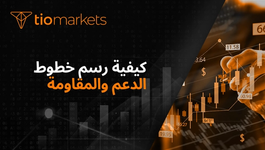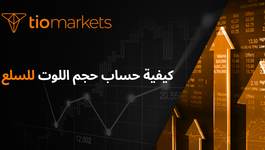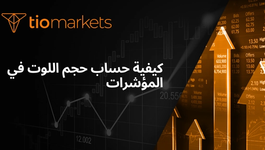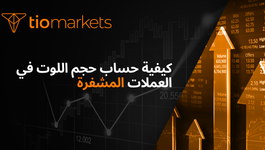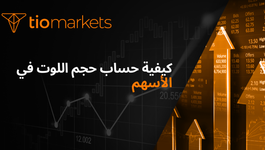How to Use Moving Average in Range Trading?
BY TIOmarkets
|يونيو 21, 2024Range trading represents a strategic approach in the financial markets where traders identify and capitalize on currencies, stocks, or commodities trading within a consistent price range. The moving average, a pivotal tool in technical analysis, serves as a cornerstone for traders aiming to enhance their range trading strategies. This article delves into the utilization of moving averages within the context of range trading, offering insights into maximizing trading efficacy while mitigating risks.
Understanding Moving Averages
Moving averages smooth out price data to form a single flowing line, making it easier to identify the direction of the trend. This indicator is not only fundamental in gauging the market's direction but also in delineating potential support and resistance levels.
Types of Moving Averages
There are primarily two types of moving averages: the Simple Moving Average (SMA) and the Exponential Moving Average (EMA). The SMA calculates the average price over a specific period, offering a straightforward view of price trends. Conversely, the EMA gives more weight to recent prices, rendering it more responsive to new information.
Choosing between the SMA and EMA depends on the trader's strategy and the specific market conditions. While the SMA might be more suited for identifying long-term trends, the EMA can be invaluable for short-term, fast-moving trading environments.
Setting the Period
The period setting on a moving average is crucial as it defines the number of bars used to calculate the average. Shorter periods make the moving average more sensitive to price changes, ideal for short-term trading. Longer periods provide a more stable and less sensitive moving average, beneficial for long-term trend analysis.
Traders often use multiple moving averages with different periods simultaneously to get a more nuanced view of the market's direction and momentum.
Applying Moving Averages in Range Trading
Range trading strategies thrive in markets without a clear trend, where prices fluctuate within a defined horizontal channel. Here, moving averages can serve as a guide to identify the range's boundaries and signal potential entry and exit points.
Identifying the Range
The first step in applying moving averages to range trading is identifying a stable range. This can be achieved by observing how the price interacts with a moving average. A flat or sideways moving average indicates that the market is not trending and may be in a range.
Once a range is identified, traders can use additional moving averages or other technical indicators to confirm the range's stability and potential trading opportunities within it.
Trading Signals
Moving averages can provide clear signals in range-bound markets. When the price bounces off the moving average within a range, it can signal an opportunity to enter a trade towards the opposite boundary of the range. Conversely, a price that breaks through the moving average might indicate the range is ending, and a new trend is beginning.
It's crucial for traders to combine moving averages with other indicators like volume, RSI, or MACD to confirm these signals and reduce the risk of false breakouts or reversals.
Enhancing Range Trading Strategies
One effective way to enhance range trading strategies is by incorporating Fibonacci retracement levels. These levels are based on the mathematical relationships identified by the famous Fibonacci sequence and can help traders identify potential support and resistance levels within a trading range.
By combining Fibonacci retracement levels with moving averages, traders can gain a more comprehensive understanding of the price movements within a range and make more informed trading decisions.
Risk Management in Range Trading
While moving averages can enhance range trading strategies, they are not foolproof. Effective risk management is essential to protect against market volatility and false signals.
Setting Stop-Loss Orders
One of the most effective risk management tools is the stop-loss order. Traders should place stop-loss orders just outside the range's boundaries to protect against significant losses if the market breaks out of the range unexpectedly.
Adjusting stop-loss orders according to the moving average can also be a dynamic strategy to manage risk while allowing for market fluctuations.
Position Sizing
Another critical aspect of risk management is position sizing. By determining the size of each trade based on a percentage of the total capital, traders can ensure that even a series of losses won't deplete their trading account. This approach helps maintain a balanced and sustainable trading strategy over the long term.
Psychology of Trading
Understanding the psychological aspects of trading is paramount for successful range trading. Emotions such as fear and greed can significantly impact decision-making processes, leading to impulsive actions that may harm trading outcomes.
Practicing mindfulness and discipline, setting realistic goals, and maintaining a trading journal to track performance and emotions can help traders navigate the psychological challenges of range trading.
Conclusion
Moving averages are a versatile tool in the arsenal of a range trader. By providing a clearer picture of the market's direction and offering signals for entry and exit points, moving averages can significantly enhance the effectiveness of range trading strategies. However, it's imperative to combine them with other technical indicators and sound risk management practices to navigate the complexities of the market successfully.
As with any trading strategy, practice and continuous learning are key to mastering the use of moving averages in range trading. By understanding the nuances of this approach, traders can leverage moving averages to capitalize on the opportunities presented within range-bound markets.
Start Range Trading with TIOmarkets
Ready to put your newfound knowledge of moving averages to the test in range trading? Join TIOmarkets, the top-rated forex broker, and trade over 300 instruments across 5 markets with low fees. With over 170,000 accounts opened in more than 170 countries, we provide you with the tools and educational resources to trade effectively. Create a Trading Account today and start your journey towards mastering the markets.

Risk Disclaimer - of Liability: The authors, publishers, and distributors of this article are not responsible for any losses, damages, or liabilities that may arise from the use of the information contained herein. Readers are encouraged to seek professional advice from a qualified financial advisor before engaging in any trading activities.
By accessing this article, you acknowledge and agree that you are fully responsible for your trading decisions and any resulting outcomes. Always conduct thorough research and consider your financial situation, risk tolerance, and investment objectives before making any trading decisions.
Join us on social media

Behind every blog post lies the combined experience of the people working at TIOmarkets. We are a team of dedicated industry professionals and financial markets enthusiasts committed to providing you with trading education and financial markets commentary. Our goal is to help empower you with the knowledge you need to trade in the markets effectively.

